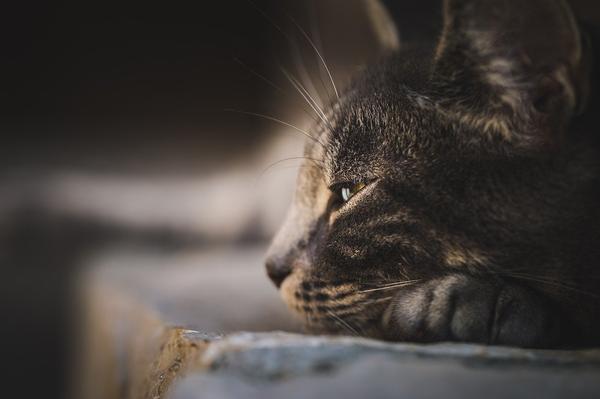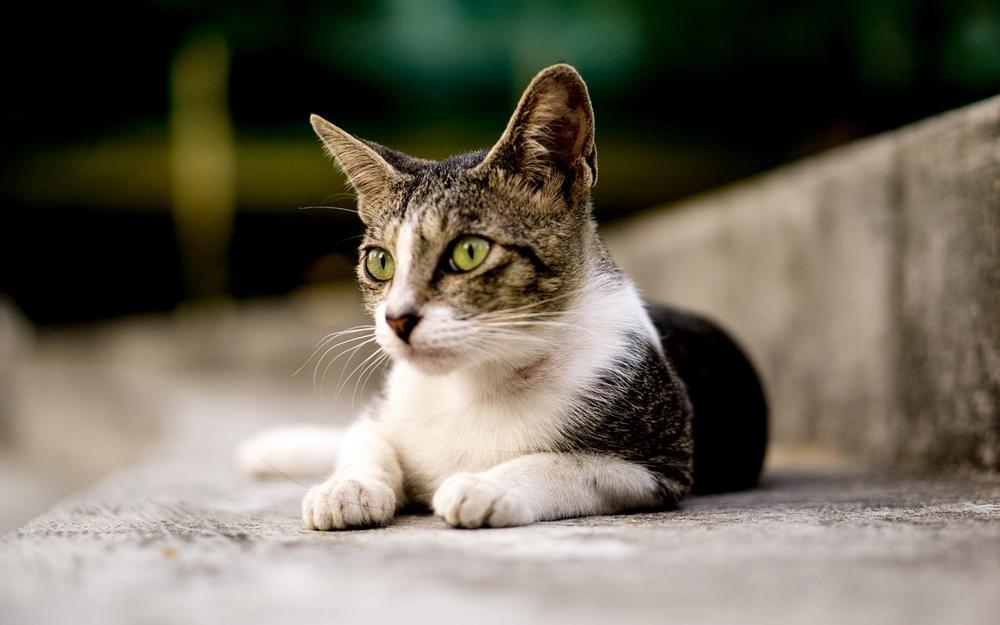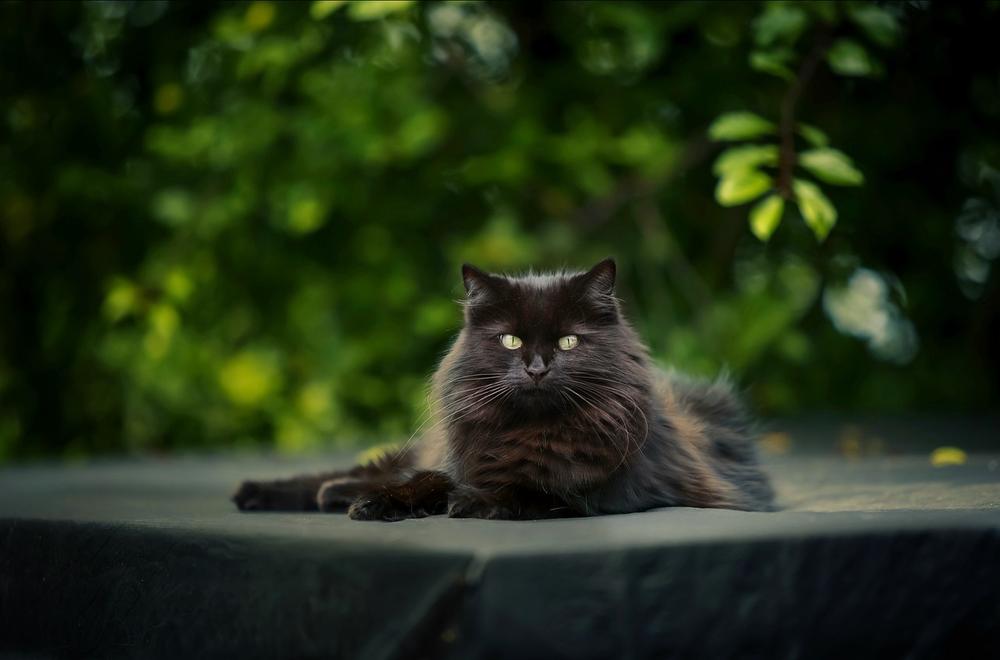Cat Color Blindness: Everything You Need to Know

Attention cat lovers, have you ever wondered what the world looks like through your furry friend's eyes?
Are they missing out on the vibrant hues that make life so beautiful? 😺
I understand, the mere thought of our fluffy companions being color blind might stir up a cocktail of emotions, from intrigue to disappointment.
You might think, "No way, my cat can't be color blind, right?"
Well, let's embark on this colorful journey together and unravel the truth about cat color blindness.
Ready?
Let's dive in.
Are Cats Color Blind?
While cats don't see colors as humans do, they can still perceive certain colors. They have fewer cone cells in their eyes, affecting their color vision. Reds may appear as brown or grey, but cats can still sense different shades and appreciate some colors in their surroundings.
Listen, cats don't see color like you do.
But that doesn't mean they're entirely in the dark.
Here's what you need to know: Cats have fewer cone cells in their eyes compared to us humans.
And those cone cells are responsible for color vision, so their perception of colors definitely has some limitations.
Now, hold on a minute, they aren't completely color blind!
Cats can still pick up on certain colors, just not the whole spectrum that you're used to.

You see, they're pretty good with blues and greens, but when it comes to red, let's just say it's not their strongest feature.
Red might look more like brown or grey to them.
Don't go assuming that your cat's world is black and white though.
They may miss out on some nuances, but trust me, there's still plenty of color to behold for them.
So while they might not appreciate a vibrant rainbow as much as you do, they sure can sense different shades around them.
But what exactly can cats perceive in terms of color?
And how does this impact their daily lives?
Let's delve deeper into the fascinating world of feline vision and uncover some surprising revelations!
What Colours Can Cats See?
The question you may be pondering is whether cats can truly perceive color.
In reality, the answer is both yes and no.
Allow me to elaborate.
Like humans, cats possess cone cells in their retinas that enable them to see colors.
However, they have fewer cone cells than us, resulting in a distinct perception of color compared to our own.
Imagine viewing the world while wearing sunglasses that diminish its vibrancy and dulled its hues.
That is essentially how our feline companions experience colors.
For instance, reds and pinks might resemble greens to them since their blue and green cones are more sensitive than their red cones.
Thus, if you don a bright red sweater while snuggling with your cat, they may not perceive it as vividly as you do.
According to certain scientists, cats' ability to see colors may be restricted to blues and grays, although others contend they can also distinguish yellows.
In any case, they certainly cannot perceive the entirety of the color spectrum.
So, which colors are visible to cats?
They primarily perceive muted shades of blues, yellows, greens, and grays.
Cats' photoreceptors exhibit heightened sensitivity to wavelengths within the blue-violet and greenish-yellow ranges.
Understanding cats' color perception can prove advantageous when selecting toys for them.
Toys in shades of blue, yellow, and green are more discernible to cats, capturing their attention better than red toys.
This knowledge of cat color perception enables you to make more informed choices when engaging your furry friend in playtime.
Whether your cat favors the cool tones of blue or the sunny hues of yellow, you will now know what to seek out!
Having said that, please remember the next time you shop for cat toys that your cat would likely appreciate a burst of color from a blue or yellow toy instead of a mundane old red one.
And if you're fascinated by your cat's unique color perception, Why Does Your Cat Have a White Nose is my detailed guide that you won't want to miss.
In this article, I delve into the possible reasons behind your cat's white nose, unraveling the mysteries that surround this curious phenomenon.
So if you're curious and eager to uncover the secrets of your feline friend's appearance, I highly recommend checking out my enlightening blog post at your earliest convenience.
How Can Cats See Colour?
Cats have cones in their retinas that allow them to perceive colors. They also have an additional layer in their eyes that reflects backlight, giving them night vision-like abilities. Their visual field is wider than ours, covering approximately 200 degrees, allowing them to see more of their surroundings.
Cats see color with the help of cones in their retinas.
Cones are those magic little receptors that enable them to differentiate between colors.
Isn't that fascinating?
Knowing how your cat sees can help you pick better toys and find that sweet spot for getting their attention.
But wait, there's more!
Cats have this extra layer in their eyes that reflects backlight, giving them that eerie glowing effect we all know and love.
It's like they have built-in night vision goggles.
And here's another mind-blowing fact...
Their visual field is broader than ours, covering around 200 degrees.
That means they can see more than just what's straight ahead. They've got a whole wide world out there to explore.
So next time you're tempted to wear some bright flashy colors to cheer up your feline friend, remember their color spectrum may be a tad different than yours.
Keep learning about your cat's remarkable abilities, because the more you know, the better you'll understand each other.
And here's another fascinating fact:
Cats have evolved specialized features to excel at seeing in the dark!
Can Cats See in the Dark?
| Question | Answer |
|---|---|
| Can cats see in the dark? | Yes, cats have evolved specialized features that enable them to see better in the dark. They have elliptical pupils, reflective cells, and an abundance of rod cells, which allow them to gather more available light. Cats require only one sixth of the light humans need to see in low-light conditions. |
Cats, let me tell you something:
They can see in the dark. Seriously.
These furry creatures have some seriously cool features that make them the kings and queens of night vision.
And just imagine how useful it would be for you to have that ability too—you could navigate your way through any room without bumping into things or making a racket.
One thing that sets cats apart is their amazing elliptical pupils. These bad boys open up wide in low light conditions, so they can soak in all the available light when darkness falls.
It gives them a major advantage over us mere humans.
But wait, there's more...
Cats have another trick up their sleeves—they've got this thing called the tapetum.
It's like a secret layer hiding beneath their retinas, made up of cells that reflect light.

This sneaky tapetum bounces any incoming light right back through their retinas, giving them even better vision in the dark.
And here's the kicker:
Cats have more rod cells in their retinas than we do.
Don't worry, it's not some weird mutation; those rod cells are specifically designed for detecting movement and working well in low light. Clever, huh?
With these superpowers, cats only need a measly sixth of the light that we humans need to see in the dark.
Talk about efficient!
Oh, and I almost forgot to mention...cats also have incredible depth perception. That means they can track and hunt their prey with deadly precision.
They're basically ninja masters of the night.
So next time you see your cat creeping around in the darkness, remember this:
They're fine-tuned night vision machines. End of story.
Is a Cat's Eyesight Bad?
Despite not being as sharp as humans up close, a cat's eyesight is not all bad. Their excellent depth perception helps them hunt, and sacrificing visual acuity and depth perception allows for a wider field of view.
Don't worry, cats may not have the best eyesight, but that doesn't mean it's all bad news!
Let's start with their depth perception.
Cats are skilled hunters and their excellent depth perception helps them chase down prey without missing a beat.
But up close, they're not as sharp as us humans.
Their vision is more near-sighted compared to ours, so make sure to get their attention before getting too close.
They might not have clarity until you're about 20 feet away.
Now, let's talk about their peripheral vision.
Cats have an impressive range thanks to their side-positioned eyes.
But there's a trade-off.

Sacrificing visual acuity and depth perception allows for a wider field of view.
So, if you want your cat to focus on something right in front of them, make it extra appealing.
Eye-catching toys, treats, or little movements can do the trick!
Also, bear in mind that excessive petting can sometimes trigger aggression in cats.
It may sound strange, but overwhelming stimulation can lead to what we call petting-induced aggression.
And grooming?
Well, after being pampered, your cat might give you a nip.
It's their way of telling you to back off a bit. They need their personal space too, you know?
Lastly, when stressful situations like fireworks displays arise, prepare your cat ahead of time.
Loud noises and sudden bursts of light can be really jarring for our feline friends, especially during events like the Fourth of July.
The Cat's Vision: Color Perception Unveiled
- Cats have limited color perception and are less sensitive to changes in brightness.
- Cats struggle to distinguish reds and pinks, perceiving them as green.
- Cats can primarily see muted tones of blues, yellows, greens, and grays.
- Toys in blue and yellow are more visible to cats.
- Cats have a wider visual field of around 200 degrees.
- Cats have evolved specialized features for seeing in the dark.
- Cats have excellent depth perception and can see well at night.
- Cats are more near-sighted than humans and have limited visual acuity.
- Cats may exhibit aggression when petted or when they need space.
- Cats should be prepared for stress-inducing situations like fireworks.
And that wraps up today's article.
If you wish to read more of my useful articles, I recommend you check out some of these: Can Cats Drink Beer, Do Cats Know When You Are Sick, Can You Use Human Shampoo on Cats, Pregnant Cat Flea Treatment, and Can I Get Worms From My Cat Sleeping in My Bed
Talk soon,
-Sarah Davis